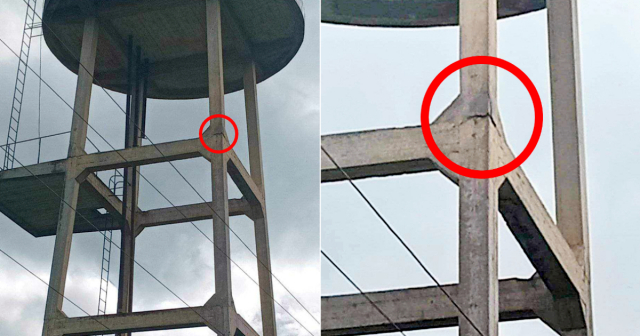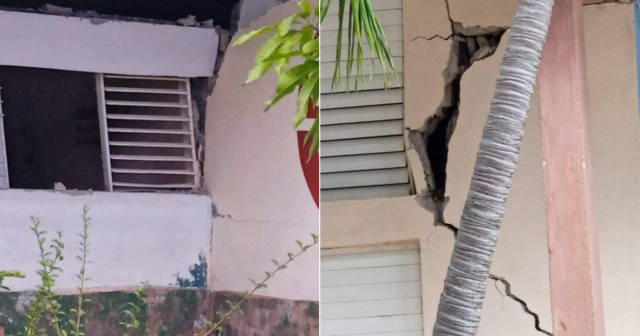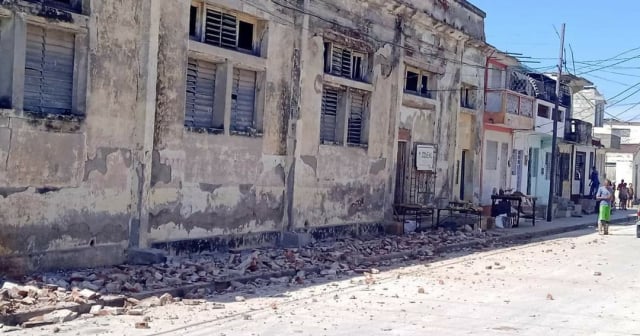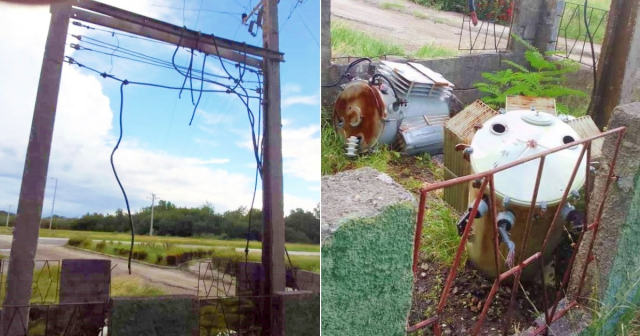
The strong earthquake reported on the morning of this Sunday in Eastern Cuba reached a magnitude of 6, breaking previous records and becoming the most intense quake of 2024.
"The network of stations of the Cuban National Seismological Service has recorded an earthquake reported as perceptible at 10:50 local time, located at coordinates 19.75 degrees north latitude and -76.91 degrees west longitude, at a depth of 10.0 km and with a magnitude of 6.0, situated 48 kilometers southeast of Pilón, Granma province," reported Ana María Vázquez Villavicencio on her social media.
The Information and Communication specialist at the National Center for Seismological Research (CENAIS) shared a statement from the institution, which stated that the current earthquake is the 13th perceptible seismic event of the year 2024.
"To date, reports of perceptibility have been received in the province of Santiago de Cuba, Guantánamo, Granma, Holguín, and Ciego de Ávila. At the close of this information, no material or human damage has been reported," added the CENAIS statement.
In 2024, Cuba recorded several noticeable earthquakes, primarily in the eastern region of the country. Here are the most significant events:
- March 23: A magnitude 3.8 earthquake was felt in Caimanera, Guantánamo Province, and in several areas of Santiago de Cuba.
- April 17: A magnitude 3.4 earthquake was felt in Caimanera and in the city of Santiago de Cuba.
- April 25: Two earthquakes occurred in the municipality of Sibanicú, Camagüey province, with magnitudes of 2.8 and 3.1, respectively.
- May 8: Seismic events were reported in Holguín and Matanzas. In Holguín, a magnitude 3.0 earthquake was located near Moa. In Matanzas, a tremor of 2.9 was recorded in Santa Marta and Varadero, followed by aftershocks of 2.8.
- On June 10, a magnitude 4.3 earthquake shook the city of Santiago de Cuba, and was also felt in the provinces of Guantánamo, Granma, and Holguín.
- On August 17, an earthquake with a magnitude of 4.1 was recorded southwest of the Niceto Pérez municipality and southeast of the city of Santiago de Cuba.
- September 7: A magnitude 4.1 earthquake was felt in Santiago de Cuba, followed by more than 530 aftershocks in the Oriente fault.
- October 17: A magnitude 5.1 earthquake was felt in the provinces of Santiago de Cuba, Guantánamo, and Granma.
According to the VolcanoDiscovery website, run by vulcanologist Tom Pfeiffer, Cuba was shaken near Bartolomé Maso, Granma, by an earthquake measuring 6.0 in magnitude.
The expert cited data from the European-Mediterranean Seismological Centre (EMSC) and the German Research Centre for Geosciences (GFZ) - which also recorded the earthquake with a magnitude of 6.0 - and revealed that the quake occurred at a depth of 17 km below the epicenter near Bartolomé Maso, at 10:50 AM local time.
"Shallow earthquakes are felt more strongly than deeper ones because they are closer to the surface. The exact magnitude, epicenter, and depth of the earthquake may be revised in the coming hours or minutes as seismologists review the data and refine their calculations, or as other agencies release their reports," Pfeiffer stated.
Cuba ended 2023 with 14 perceptible earthquakes.
In January, CENAIS reported that a total of 7,475 seismic movements were recorded on the Island, of which 14 were noticeable.
The Oriente fault, the primary area of seismic activity that serves as a plate boundary in the southern part of the eastern region of the country, recorded the highest number of earthquakes among the 14 that were felt in Cuba during 2023.
Other areas of the country where seismic activity was significant included the northern region of Las Tunas. Additionally, the southern area of Moa experienced three swarms of earthquakes that year, each consisting of around 500 events, although with magnitudes less than four.
In March, the CENAIS presented a map that compiled the epicenters of the earthquakes detected by the Cuban seismic station network from January 1998 to February 2024, highlighting the areas where the likelihood of seismic activity is highest and most concentrated in a seismically active country.
The study was analyzed on the portal of the Cuban Science Network (Redcien) by two local experts, Enrique Arango Arias and Manuel A. Iturralde Vinent. They emphasized that despite its low magnitude and limited perceptibility, monitoring is crucial, as it can cause fractures in rigid structures and potentially lead to more serious problems over time.
What do you think?
VIEW COMMENTS (1)Filed under:






